
REVIEW: 127 Hours
Aron Ralston’s tale of survival is the stuff of contemporary folklore. Ensnared by a fallen boulder for almost six days with little food or water, Ralston resolved to sever his trapped arm using a blunt pocket-knife to free himself and reach safety. That Hollywood has adapted this story should come as little surprise: the victorious against-all-odds narrative is after all, commonplace within American cinema. Although, given the immense publicity surrounding Ralston’s experience – which made news around the globe – the dilemma for director Danny Boyle was always going to be one of engaging an audience already aware of the film’s outcome.
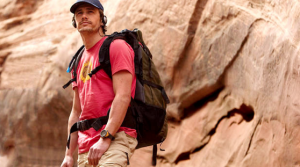 While this is hardly a unique quandary – the same could be said for any number of biographical films or narratives ‘based on true events’ – the reproduction of recent history via film can differ markedly. Frequently the ‘real life’ story is either reproduced within the (already) familiar frame of genre cinema (The Fighter, Invictus), re-evaluates its subject/s or focuses on issues of characterisation (W., Frost/Nixon), or represents historical/personal events through non-traditional formal means (Hunger, I’m Not There). Given the prior familiarity that accompanies such biopic narratives, the emphasis is typically less on manipulating the audience’s anticipation of plot events and more on the means of presentation and the production of affect. 127 Hours is such a film, trading heavily in style as a substitute for suspense or expectation.
While this is hardly a unique quandary – the same could be said for any number of biographical films or narratives ‘based on true events’ – the reproduction of recent history via film can differ markedly. Frequently the ‘real life’ story is either reproduced within the (already) familiar frame of genre cinema (The Fighter, Invictus), re-evaluates its subject/s or focuses on issues of characterisation (W., Frost/Nixon), or represents historical/personal events through non-traditional formal means (Hunger, I’m Not There). Given the prior familiarity that accompanies such biopic narratives, the emphasis is typically less on manipulating the audience’s anticipation of plot events and more on the means of presentation and the production of affect. 127 Hours is such a film, trading heavily in style as a substitute for suspense or expectation.
Opening with split screen imagery of highly populated social experiences (rock concerts, sporting events, stock market trading floors, public transport etc.), Boyle seems intent on contrasting Ralston’s imminent isolation with the chaos of urban life. The frenetic editing of these visuals lends motivation to Ralston’s wilderness escape – fostering a desire for the quiet solitude of open spaces – while emphasising the tragic irony of his accident: Ralston has told no-one of his intended location, a symptom (the film later explores) of his emotional disconnectedness from other people. Stylistically then, this brief ‘prologue’ serves to delineate the pace and space of the two opposing worlds in which Ralston inhabits. Boyle even delays the film’s title card until the very moment Ralston is trapped by the fallen boulder. Marking out the narrative proper and the corresponding time of his canyon imprisonment, 127 Hours ostensibly ‘begins’ with this accident.
 However, rather than consolidate the spatial or temporal opposition established in this opening – the separation of the ‘two worlds’ – Boyle persists with various overt stylistic techniques, rendering such distinctions all but irrelevant. With only the briefest of refrains, Ralston’s predicament is presented in a series of rapidly edited, hand-held shot sequences, each characterised by marked changes in the angle and position of the camera. The result of these stylistic choices is a discernible contraction in the film’s implied cinematic time. Rather than explore the protracted confrontation with death (and the macabre alternative) that Ralston faced – as implied by the film’s title – 127 Hours zips along with the kinetic energy of a music video clip. At best one could accuse Boyle of disingenuous filmmaking. At worst though, the film borders on trivialising Ralston’s experience; reducing it to an exercise in cinematic showmanship.
However, rather than consolidate the spatial or temporal opposition established in this opening – the separation of the ‘two worlds’ – Boyle persists with various overt stylistic techniques, rendering such distinctions all but irrelevant. With only the briefest of refrains, Ralston’s predicament is presented in a series of rapidly edited, hand-held shot sequences, each characterised by marked changes in the angle and position of the camera. The result of these stylistic choices is a discernible contraction in the film’s implied cinematic time. Rather than explore the protracted confrontation with death (and the macabre alternative) that Ralston faced – as implied by the film’s title – 127 Hours zips along with the kinetic energy of a music video clip. At best one could accuse Boyle of disingenuous filmmaking. At worst though, the film borders on trivialising Ralston’s experience; reducing it to an exercise in cinematic showmanship.
The singular aspect in which Boyle’s stylistic idiosyncrasies actually work to the film’s benefit (and James Franco’s strong performance) is in alluding to the character’s increasing mental fragility. When, in one sequence, Ralston imagines himself at a party housing a giant inflatable Scooby-Doo, he inadvertently becomes fixated on the character’s theme song, which he proceeds to chant in a kind of manic mantra. This scene shares more than a passing similarity with one from Kevin Macdonald’s excellent docudrama, Touching the Void (2003) in which a seriously wounded climber in the throes of hypothermia falls prey to the repetitive strains of a Boney M song. But where Macdonald’s film isolates this moment of madness as a culminating rupture in his survivalist tale, Boyle undercuts the effectiveness of such scenes through their sheer frequency. Under a tide of sharply edited flashbacks, hallucinations and wish-fulfilments, Boyle enables the audience to forget about the potentiality of a drawn-out death. It’s not so much about putting us inside Ralston’s head as it is taking the easy way out (and allowing the audience to do likewise).
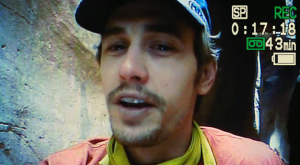 And that’s the most disappointing aspect of 127 Hours. While the film’s stylistic presentation and pacing make for palatable viewing, the avoidance of a substantial exploration (in terms of time, isolation etc.) of Ralston’s situation actually works against any real empathetic engagement with his character. It’s almost fitting then, that Boyle’s treatment of the highly anticipated amputation sequence is much like the film as a whole, briefly shocking and then quickly forgotten.
And that’s the most disappointing aspect of 127 Hours. While the film’s stylistic presentation and pacing make for palatable viewing, the avoidance of a substantial exploration (in terms of time, isolation etc.) of Ralston’s situation actually works against any real empathetic engagement with his character. It’s almost fitting then, that Boyle’s treatment of the highly anticipated amputation sequence is much like the film as a whole, briefly shocking and then quickly forgotten.
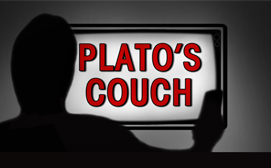

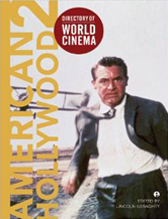
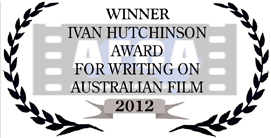
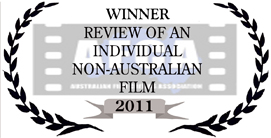
Totally agree. It felt as if is was trying to be far more entertaining than it needed to be. I got no sense of the struggle and ultimate realisation that there was only one course of action. and no sense of real dread. I felt that longer shots of his lingering desperation would have made the audience feel more of his loss and more towards Aron himself.
Considering the subject matter, and how much of a journey I should have gone on with this character it is surprising to me that I hadn’t thought about the film again, since monday night, until I read this.
A great performance, but an overwhelming feeling of eh…
I think you’re right, this film had the potential to make a far greater and lasting dramatic impact (not least for Franco’s impressive performance) but the overwhelming use of so many stylistic distractions and segues rendered it a pretty disposable experience. I can only wonder what might have been had this tale ended up in a different director’s hands.
I think Steve McQueen (Hunger, 2008) would have made a far more interesting, albeit far less commercially viable, account of Ralston’s saga. McQueen – a filmmaker with a background in fine art, where public legitimacy doesn’t really factor into the creative process – is one who dares to linger in the moment longer than most audiences can tolerate. I think you’re right on the money (pardon the pun) when you remarked: “At best one could accuse Boyle of disingenuous filmmaking. At worst though, the film borders on trivialising Ralston’s experience; reducing it to an exercise in cinematic showmanship.”
The hyper-saturated colour pallet is a Boyle trademark and trending to be something of an industry preoccupation if this compilation is anything to go by: http://theabyssgazes.blogspot.com/2010/03/teal-and-orange-hollywood-please-stop.html My two favourite examples of stylistic excess: The completely artificial yet somehow completely unapologetic uplighting in the underground swimming scene; and the super fast rewind out of the crevice across the scorching red earth and back to Ralston’s truck to reveal a bottle of orange Gatorade glistening with perfectly formed water droplets that would make any food stylist salivate… let alone someone on the verge of critical dehydration.
It’s interesting that you mention Steve McQueen, Marcus. He is precisely one of the directors I had in mind when I was considering ‘127 Hours’ and what could’ve been in Boyle’s absence.
And you’re absolutely spot on about those two examples. The latter one is a perfect demonstration of the stylistic/commercial imperatives and/or appeal of Boyle’s work. Product placement as substitute for ‘thirst’.
Hey Josh,
Couldn’t agree more, though the ‘tendon’ scene has popped into my head and made me grimace on more than one ocassion since watching the film on the weekend. I did, however, benefit from watching an interview with the man himself who stated that the film is a great representation of what he went through and accurately portrays his exhileration upon realising the ability to actually free himself (he went into detail about different aspects of what he had to do to undertake his escape and I cannot help but feel a short interview with him post film would actually have benefited the audience in that they could understand how much was derived from artistic licence.
Love the website BTW.